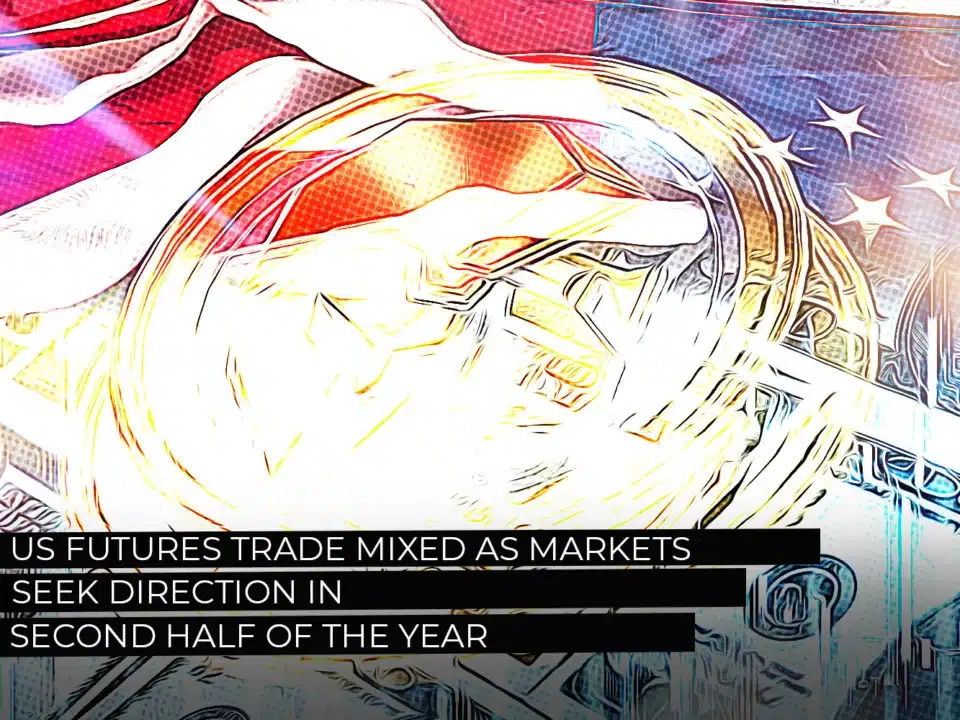In the second half of the year, US futures trade mixed as investors seek direction amid fluctuating market sentiment. Various factors, including economic indicators, geopolitical events, and corporate earnings, play significant roles in shaping market trends. With key sectors showing varying degrees of volatility, investors are keen to adopt strategies that minimize risk while maximizing returns. As the markets navigate this period of uncertainty, staying informed and adaptable becomes crucial for achieving investment success.
Factors Influencing Market Sentiment in the Second Half of the Year

As we move into the second half of the year, several factors will play crucial roles in shaping market sentiment in the US:
Economic Indicators:
- Employment Data: Job growth and unemployment rates provide insights into economic health.
- Inflation Rates: Rising inflation can prompt the Federal Reserve to adjust interest rates, impacting market confidence.
Federal Reserve Policies:
- Interest rate hikes or cuts can directly influence investor behavior and market trends.
- Quantitative easing measures support market liquidity, which can buoy market sentiment.
Geopolitical Events:
- Trade tensions, particularly between the US and other major economies, can lead to volatility.
- Political changes, such as upcoming elections, may introduce uncertainty or optimism.
Corporate Earnings:
- Performance reports from key industries provide indications of economic resilience or downturn.
- Technology and Healthcare are particularly pivotal in influencing market sentiment.
Pandemic Developments:
- Ongoing developments related to COVID-19, including vaccination rates and new variants, can affect economic recovery and investor confidence.
Understanding these factors helps investors navigate the complexities of the US futures market during this period. By staying informed, they can adjust strategies to mitigate risks and seize opportunities as they arise.
Key Sectors to Watch in the US Futures Market
As the second half of the year unfolds, several key sectors in the US futures market deserve closer attention. Investors keen on navigating the complex landscape should particularly focus on these:
Technology: The tech sector remains a powerhouse in the US market. Semiconductors, in particular, drive significant growth, while emerging innovations in AI and cloud computing continue to capture investor interest.
Healthcare: With ongoing advancements and the increased focus on biotechnology, healthcare represents a promising sector. Pharmaceuticals, medical devices, and health services sectors are especially noteworthy.
Energy: The energy sector often faces volatility, but recent trends in renewable energy and traditional oil and gas futures present substantial opportunities and risks. Watch for movements driven by geopolitical events and regulatory changes.
Consumer Discretionary: This sector reflects the non-essential consumer goods and services market. The performance of retail, entertainment, and travel industries often provides clues about consumer confidence in the US economy.
Financials: Comprising banks, investment funds, and insurance companies, the financial sector is crucial. Pay attention to changes in interest rates and regulatory policies that could influence market dynamics.
By focusing on these sectors, investors can better navigate the US futures market in the second half of the year.
Strategies for Investors Amid Market Uncertainty
Investing in the US futures market during times of uncertainty demands strategic planning and informed decision-making. Here are a few strategies to consider:
Diversify Your Portfolio: Spread your investments across various sectors to mitigate risks. By having a mix of assets, you can protect your portfolio from significant losses if one sector underperforms.
Stay Informed: Keep up with the latest news and trends in the US market. This information can help you make timely decisions and adjust your strategies as needed.
Set Stop-Loss Orders: Protect your investments by setting stop-loss orders. This mechanism automatically sells your assets when they drop to a certain price, preventing further losses.
Focus on Long-Term Goals: Instead of reacting to short-term market fluctuations, concentrate on your long-term investment goals. Historical data show that markets usually recover after downturns.
Seek Professional Advice: Consult with financial advisors who have expertise in the US futures market. They can provide personalized strategies and insights.
By adopting these strategies, investors can navigate the complexities of the US futures market and enhance their chances of achieving their financial goals.
Frequently Asked Questions
What does it mean when US futures trade mixed?
When US futures trade mixed, it indicates that the futures contracts for key stock indexes such as the Dow Jones, S&P 500, and Nasdaq are showing varied directions. Some may be pointing towards an increase (positive trend), while others may be indicating a decrease (negative trend). This mixed movement suggests uncertainty among investors about the market’s short-term direction.
Why are market directions particularly important in the second half of the year?
The second half of the year often brings increased market activity due to several factors such as corporate earnings reports, economic data releases, holiday shopping seasons, and potential policy changes. Investors and traders closely watch these events to gauge market sentiment and adjust their strategies accordingly, making market directions during this period especially noteworthy.
How can investors navigate mixed markets?
In a mixed market scenario, investors might consider adopting a diversified investment approach to spread risk. This can include a balanced portfolio with a mix of stocks, bonds, and other assets. Additionally, focusing on long-term investment goals rather than short-term market fluctuations can help manage uncertainty. Consulting with a financial advisor for personalized advice is always recommended.
What indicators should be monitored to understand market trends?
To understand market trends, investors should monitor key economic indicators such as GDP growth rates, unemployment rates, inflation figures, and consumer spending. Corporate earnings reports, Federal Reserve policies, and geopolitical developments also play significant roles in shaping market trends. Keeping an eye on these indicators can provide insights into future market movements.







